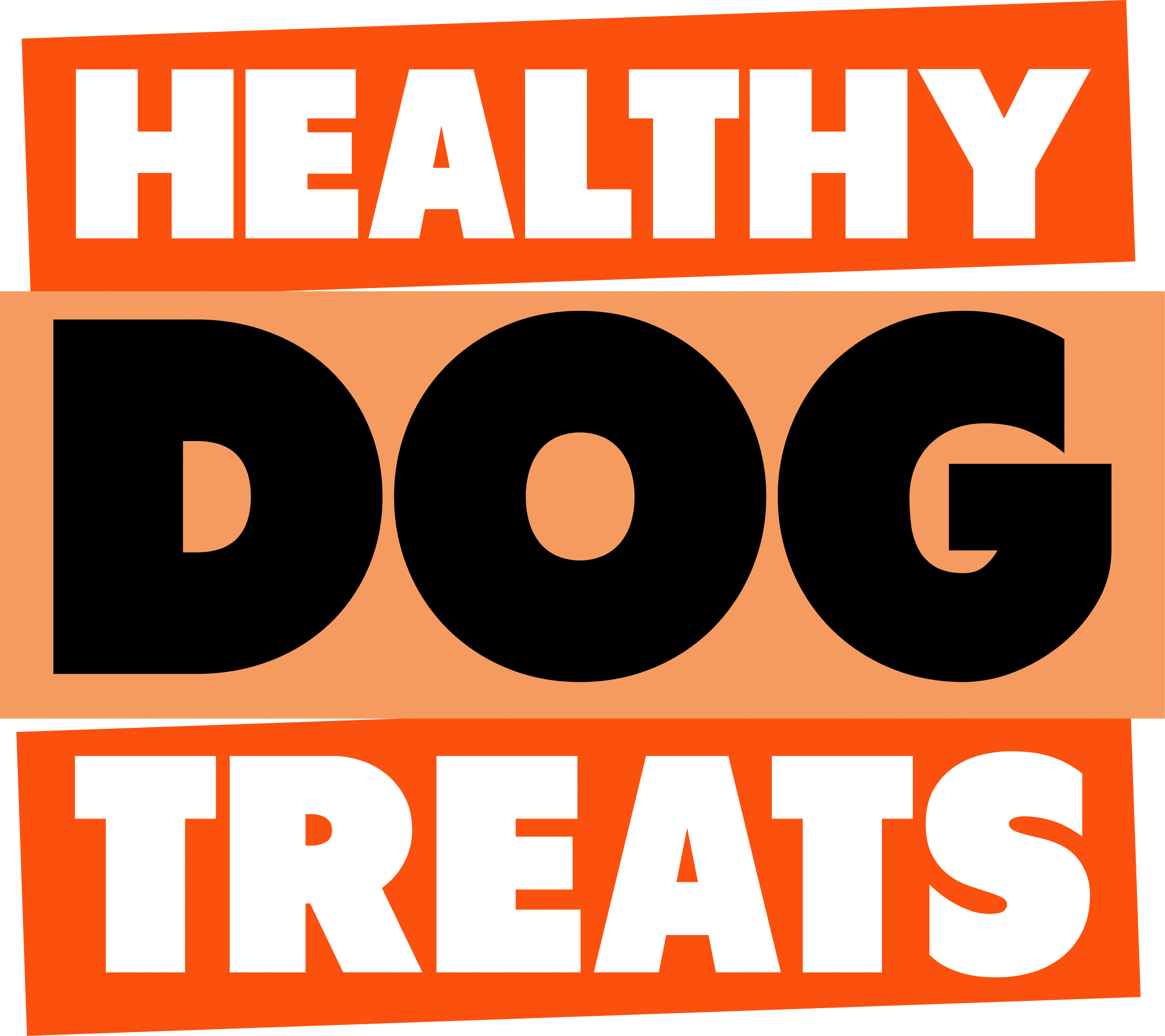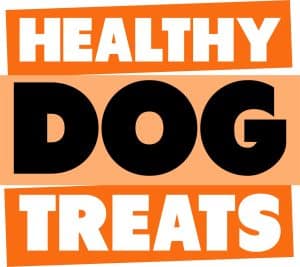No products in the cart.
Macro-nutrient dog food. What is the best ratio of Meat :Fat: Carbs ?

This is the BIG question in dog food. How to arrange the proportions of the MAIN ingredients in dog food AND from what sources these come from (animal or plant).
To clarify, there are only THREE macro-nutrients in dog food: protein, fat, and carbohydrates.
Micro-nutrients are the vitamins and minerals and while important like in commercial dog food can be added in small powdered amounts at the end of the mix.
The reason this is important is that while 25% of owners in Australia and America have reported feeding SOME raw meat or bones on a regular basis to their dogs to supplement their diet, only 3% of owners REGULARLY feed raw meat and bones as their dogs primary diet. Ref 1
The table below shows the difference in RECOMMENDATIONS of what proportion the macro nutrients should make up in dog food. NOTE while both meat and plants have protein in them, meat is typically much higher bio-available than plant material (see table later in this article) – and since many authorities list MEAT rather than the protein amounts, we are showing this table in an easier to understand way (as far as food prep goes).
Also note that dried beef (10%) water is typically 59% protein, compared to most grain (10% not bio available protein).
PERCENTAGE of meat (PROTEIN): Fat: Carb Per Dog FOOD DIETS
| DIET TYPE | Meat & Offal (for PROTEIN) % | Fat % | Carbs % |
| RAW MEAT DIET | 80% plus MEAT | 10% (must include Omega 3 fish oil, and Omega 6) | 5-10% max |
| RAW with VEGGIES | 70% MEAT | 10% | 20% |
| dogsrecommend Ref 3 | 28% min protein (though 35-45% protein recommended) so MEAT and offal needed = 70% | Max of 25%-30% of calorie intake. So half this amount in % | No min amount but recomm. some for ‘minerals and vitamins. ‘ “mostly be treated as a filler” |
| Dogsnaturallymagazine ref 10 | 70% MEAT Plus Offal (10% Liver 5% heart). bone = 10% – 15% | 10% and 20% | “carbohydrates aren’t essential … your dog will do just fine without them. “ Add mostly for fibre content. |
| KETOGENIC | 45% | 45% | 10 |
| COMMERCIAL DOG FOOD – AAFCO MIN | 30% meat (to achieve 18% total minimum protein and qualify as ‘dog food’ | 10 (avg) | 60% (GRAIN or root/ leaf matter) usual up to 5% Crude fibre |
| VEGAN | 0 | 10 | 90% (grain root or leafy vegetable) |

[Note: Protein contains 4 calories/gram. Meat like beef can contain up to 60% bio available protein on a DRY matter basis. Carbohydrates contain 4 calories/gram, with indigestible fibre removed before calculations. Fats contain 9 calories/gram. Too much fat can cause pancreatitis.
Dry weights of meat and vegetable matter can mostly be swapped to maintain the same energy intake for a dog, FATS contain over twice the KJ value.
NOTE in raw diets RAW bones are used to provide the highest quality Calcium: Phosphorous bio available ingredients. Calcium is often added as a separate mineral from non-bone sources in other diets.]
INTRO CONTINUED ….
While many people say that they don’t feed raw because of safety concerns of bacteria, they are probably unaware that “although human grade meats are often used with homemade raw diets, this is not necessarily the case with commercially prepared raw pet foods.” Ref 1 … and invariably, almost never with commercial pellet and canned foods.
If raw meat is human grade and kept in a refrigerator there is little chance of major bad bacteria populations. Bad bacteria is also mostly a surface issue with red meat, only meats like chicken breast are more likely to have bad bacteria inside the meat, but most dog’s biome is geared towards dealing with bad bacteria MUCH better than humans.
The commercial dog foods that most people use have about 30% meat which is MSM (machine separated meat) where random fatty meat and bone and offal that are ripped off the bone of carcasses is forced through a grate to make up that minimum protein required.
Commercial dog food follows the American volunteer organizations AAFCO min and max ingredient requirements. While there is much fanfare on commercial dog food sites about the importance of grain or carbs in their dog food (which are MUCH cheaper than meat), AAFCO tables do NOT have any MINIMUM recommendations on carbs !
As far as macro nutrients go, Aafco nutrient profiles for Dry matter go this is the BIG picture recommendations:
| MACRO NUTRIENT | Growth and Reproduction Min | Adult Maintenance Minimum | Maximum |
| CRUDE PROTEIN %
| 22.5 | 18.0 | NO MAXIMUM! |
| CRUDE FAT % | 8.5 | 5.5 | NO MAXIMUM |
| Linoleic acid % | 1.3 | 1.1 | NO MAX |
| alpha-Linolenic acid % | 0.08 | NDd | NO MAX |
| Eicosapentaenoic + Docosahexaenoic acid | 0.05 | NDd | |
| (Linoleic + Arachidonic):(alphaLinolenic + Eicosapentaenoic + Docosahexaenoic) acid Ratio | 30:1 | ||
| CRUDE CARB % | NO MINIMUM | NO MINIMUM | NO MAXIMUM |
As you can see, NO SOURCES (meat or carb) are defined, so using Grain or vegetables as the main source of ingredient (which typically are MUCH LESS bio available (useable by the dog), can mean a protein deficient diet when commercial dog food makes just adhere to the tables.
There are NO MAXIMUM limits for protein, meaning a RAW balanced animal (meat, bone and offal diet) is still acceptable, and preferred by many authorities.
Just as important and more telling, is that there is NO MINIMUM requirement for CARBS in dog food – ie, they are not mandatory or very necessary. We personally only use them to supply non soluble fibre to form stools and provide the right biome food for bacteria in the intestine.
It is noted that Ref 1 quotes the issue with raw feeding of animals not with the lack of fibre or excess of bio available protein from meat, but because wolves/ dogs in the wild eat the WHOLE animal to gain whole nutrition. Clearly not every owner provides whole animal carcasses for their dogs. Hence why we use carbs at all.
AFFCO vitamins and mineral requirements are SO LARGE, that NO NATURAL mix of animal or vegetable (raw or cooked) can meet them. That is why commercial dog food is overloaded with often substandard vitamins and minerals (that are not necessarily bio available to dogs) to claim “aafco approved”. This is coincidently how this definition provides a barrier to natural food being accepted as whole and complete.
META Analysis of macro nutrients in dog food.

There are reasons why people trust large corporations with their dog food, and reasons why people supplement these foods with meat. But first we look at the reasons why various sites make recommendation on the right macro nutrient mix.
“A large portion of energy in the diet comes from fats and proteins, followed by carbohydrates.” Ref 2 “Proteins are important in the formation and maintenance of cartilage, tendons, and ligaments. Protein in dog food also assists with muscle, skin, hair, nail, and blood formation. “
Out of the 22 amino acids that make up protein 10 are essential amino acids that cant be created inside of a dog – they have to be supplied via food, and these minimum amounts are show in affco tables (but again NOT the source), and plant matter is typically far less bio available than animal protein – THIS is why if an amino acid minimum level is achieved mostly by plants, it might not be sufficient for the dog.
“Animal protein sources have the highest amounts of essential amino acids. Proteins from plants tend to have a lower digestibility since dogs cannot digest plant fibre as easily as other sources. In theory, dogs can be sustained on a completely plant-based protein diet, but that diet may need various sources of protein in order to reach a daily minimum that can safely be absorbed. “ Ref 2
“Crude is just a word to encompass all the ways that protein is calculated and determined in the diet. It does not provide information about the protein quality or the nutritional value of the protein source in your dog’s diet. “ Ref 2
“If that protein source is lacking essential amino acids or they cannot be absorbed by the body, then it is considered a low-quality protein. “ ref 2
“The main difference from human nutrition is the lowered requirement for carbohydrate intake. While humans primarily utilize carbohydrates for endurance draining activities, dogs utilize proteins and fats at a much more efficient rate. In fact, the primary use for most dogs of carbohydrates is from fibre, which smooths the GI tract. Dogs thus have a higher requirement for fat and proteins with a much lower carbohydrate requirement than their owners. “ Ref 3
You will find that the standard CRUDE FIBRE listed on most commercial dog food mixes is about 5%. If you have a mature dog or want to ensure firm stools, or feed a dog a raw diet with a small amount of commercial dog food (for its fibre content), you can buy commercial dog food with fibre up to 15%. But these mixes are often VERY bland.
AND because aafco doesn’t have any recommended minimum fibre OR its source, often POOR fibre (not designed for the dog’s biome) can be used.
We have created a very detailed science based article on the ideal dog fibre here:
If aafco recommends a minimum protein requirement of 18% for dogs, AND that is 18% bio-available protein. What percentage is actually the IDEAL protein for your dog?
“As a general rule, a dog’s diet should consist of at least 28% protein by weight, and in many cases, a dog will be better off with an increased amount. The “ancestral” diet is estimated to have been about 52% by weight, but that may be pushing it for a modern dog and somewhere from 35%-45% is probably ideal.” Ref 3
This is how that works out in the average dog food. Because most grain (wheat, rice etc) have around 10% protein (and this is NOT bio available for carnivore dogs), most brands have to include about 30% meat (of random quality) to boost the overall minimum protein to 18% – but as said that 18% is NOT all bio-available (useable) protein. THIS is why the above reference suggests proteins closer to 35 – 45% (ie double what the aafco guidelines say.
And with ref 1 suggesting you can swap up to 25% of commercial dog food for meat (dry weight equivalent), a single ingredient meat or offal (healthy dry meat dog treat perhaps), can be a great way to get that modern dog protein boost closer to their recommendations.
PROTEIN bio-availability for dogs (or useability / digestibility)
“Not all protein is equal for that matter, the digestibility of proteins varies based on the original sourcing of the ingredients. Egg whites, for instance, have a much higher digestibility of protein than corn for instance. When you’re looking at the ingredients you can always assume that animal sources are much more useful for your canine than vegetable sources. We’ve compiled a table of the more common ingredients to let you see for yourself:” Ref 3
| Food | Digestibility |
| Egg Whites (cooked only) | 100% |
| Muscle Meat | 92% |
| Organ Meats | 90% |
| Dairy | 89% |
| Fish | 75% |
| Soy | 75% |
| Rice | 72% |
| Oats | 66% |
| Yeast | 63% |
| Wheat | 60% |
| Corn | 54% |
While people often feed eggs to their dogs (we do) it is important to feed them COOKED eggs because biotin & trypsin are inhibited when you feed raw eggs for dogs
Apart from that, it is obvious that MEAT and OFFAL (with addition of bone for the right type and amount of calcium: Phosphorus ratio) are the MOST APPROPRIATE natural foods for YOUR dog.
The majority of blogs on this site analysis the high value of animal meat for dogs … so rather than re-tread the past, lets now look at what these reference articles have to say about CARBS.
WHAT ABOUT EXCESS PROTEIN in a dog diet?
When we talk about excess protein, we are usually taking about meat protein, since grains typically have a low level of protein and many vegetables have low bio availability.
“Dogs, have liver enzymes that function to adapt to the amount of protein consumed, allowing the animal to conserve nitrogen on a low-protein diet, and to excrete excess nitrogen on a high-protein diet. However, this adjustment process (especially the adjustment for a diet containing excessive protein) can exact a toll on the kidneys.” Ref 8
However, you should also understand that high carbs can also affect kidneys. “low protein dry food your vet is trying to sell you goes directly against the available science on kidney disease in dogs. “ “ to avoid (or treat) Kidney disease you need to reduce the amount of work the kidney has to do. (This is why ) choosing a dry, ultra-processed, cereal-based food stuff over a fresh, species-appropriate diet is going to potentially cause kidney disease in dogs.” ref 9
“Calcium oxalate stones and their evil twin struvite crystals are proven to be a result of a high carbohydrate, cereal based diet. Stones have been found, in research, to be caused by pet food companies acidic dry pet food. A high carbohydrate diet alkalises your pets’ urine which can cause struvite crystals in their bladder, preventing them from passing urine. To counteract this, pet food companies began acidifying their products. Acidifying pet food has been linked to an increase in calcium oxalate stones which can cause kidney failure (largely in cats).” Ref 9
It appears that using high carb diets, then trying to counteract their affects is as bad, if not much ‘worse’ that just using natural meat food.
“High-protein foods are high in acids. Some high-acid, high-protein foods (such as red meat, poultry, fish, or eggs) compel the body to counter the acid with an alkaline preparation to preserve its pH balance. “ ref 8 They go on to say: the “body obtains this alkaline “buffer” from the skeleton, dissolving the dog’s bones into calcium and phosphates, which can lead to bone loss and kidney stone formation.” Ref 8
But in a raw diet there is ample bone provided (which provides the right ration of calcium to phosphorus – which counteracts the potential above issue! A high protein MEAT diet of wolves and wild dogs, automatically includes bones to provide sufficient calcium and phosphorus. You only get issues when commercial dog food makers use a lot of carbs to save money and have to modify their recipes with bulk added vitamins and minerals and chemicals to change the pH.
Getting that right, and tasty without faking the taste with extra oil and MSG – is they are paid the big money, to fool dogs into a low quality main diet.
That is why any dog food that has over 50% meat is so rare, and expensive.
“Researchers have found that geriatric dogs with healthy kidneys maintain better on a higher amount of protein than is commonly found in “maintenance” foods. And, counter to years of conventional wisdom, recent research has indicated that dogs with compromised kidney function do NOT fare better on low-protein than high protein diets. When protein was drastically reduced or eliminated from experimental diets, many normal physiologic processes were negatively affected in the animal; if there were benefits to be had from the low-protein diet, there were too many physiologic costs to make the diet worthwhile.” Ref 8
The really important question should be, if meat and offal is natural to dogs, and using excess plant material that is not bio available to dogs has to have all the science work to change pH levels to try and keep it safe – what is the value to dogs besides profit motive by manufacturers?
Much of the science papers quoted on dog food sites are SPONSORED by the dog food makers. Many vet schools are sponsored by dog food makers. Many vets make a good profit from selling commercial dog food that is “vet prescribed only” packages. There is no coincidence that there is a strong grain and veggie push.
Draw your own conclusions why plant matter and grains are using in dog food at all.
CARBOHYDRATES in dog foods
Carbs contribute the same amount of ENERGY as protein (3.5 kilocalories of energy per gram). The issue is that Protein is used for body maintenance and many other cellular issues, whereas carbs (SUGAR) is just used for energy functions. Too much carbs means you are replacing protein equivalent for a given calorie diet.
“(Protein and their component) amino acids, build body proteins, which in turn function as components of enzymes, hormones, a variety of body secretions, and structural and protective tissues.” Ref 8
“The thing is, most food items which are good carb sources are also excellent sources of micronutrients that can’t be received simply from meat or fish. These include both minerals and vitamins.” Ref 3
While aafco DOES NOT HAVE a minimum carb requirement, this cheap plant filler tends to make up 70% by dry weight of most commercial dog foods.
And the curious thing about the above statement by the reference article, is that while meat or fish might not achieve ALL the very high vitamin and mineral requirements set by AAFCO, NEITHER DO ANY GRAIN OR VEGETABLE.
Yes, grain and vegetables have SOME of the minimum requirements of the nutrition tables, but to prove to yourself how lacking grains and vegetables are in providing anywhere near all of the vitamin and mineral requirements, please have a look at the long ingredient list on your dog food packs and the large amount of minerals and vitamins that have to be separately added to the pack JUST to reach the minimum reequipments (even if these minerals and vitamin forms are NOT bio available).
GRAINS AND VEGETABLES are not added because of the quality of their protein OR for full coverage of vitamin and minerals. They bulk up the pack and are cost effective.
THE MAIN VALUE OF PLANT MATERIAL FOR DOGS:

“This means that it’s important to check up on where the carbohydrates in your dog’s food are coming from. Grains are an inferior source, as a general rule, especially when you compare them to vegetables and fruits.” Ref 3
“The hot contesting of the amount of carbohydrates contained within a dog’s diet is why you don’t generally see the amount on the packaging of your dog foods: there’s no requirement for it.” REF 3
“Dogs are carnivores and have very little nutritional requirement for dietary carbohydrates (starch) to thrive. They get everything they require from protein and fat. Unfortunately, carbohydrates are one of the main ingredients in commercial pet food, not displayed on the packaging. Our dog’s ancestors didn’t eat dry kibble like they do today. A dog’s digestive system is geared up to digest exactly what he evolved it eat – wild prey.” Ref 4
Mypetnutritionist goes on to say dogs “do produce a small amount (of Amylase) from the pancreas which means they are capable of digesting ‘small’ amounts like grasses, seeds and plant matter” but that they are not geared to eat the massive load of carbs in most modern dog food and that doing so can “lead to many health issues like obesity, diabetes and cancer” Ref 4
“Complex carbohydrates provide slow-release energy. They aid digestion, help maintain the immune and nervous systems and help regulate the metabolism.” Ref 4 These are the ‘starches and fibres for intestine health that we agree are invaluable. But they make up only a small fraction of the total plant matter in most commercial dog food.
The one concession for carbs besides non soluble fibre is that some can provide phytonutrients, They “are not essential to keep the dog alive like proteins, fats, vitamins and minerals do, but they have shown to help with important health benefits including potent antioxidant properties” ref 4 Phytonutrients also encourage enzyme production and add fibre to the diet. The most common are carotenoids (which include alpha-carotene and beta-carotene) and flavonoids.
Outside of the corporate commercial dog food organizations the consensus is that there are far too many carbs and veggies in dog food and not enough meat and offal.
HEALTHY FATS and OILS FOR DOGS
Healthy dog treats has already provided a major article on what are considered healthy oils for dogs. https://www.healthydogtreats.com.au/top-5-healthy-dog-oils/
Basically, if you provide enough meat that isn’t highly rendered, you will get animal fat that for most livestock animals has fat around 10%. The only other oils that are required are Omega 6 and Omega 3
THIS IS THE AAFCO FAT requirements
| MIN | MIN | MAX | |
| CRUDE FAT % | 8.5 | 5.5 | NO MAXIMUM |
| Linoleic acid % | 1.3 | 1.1 | NO MAX |
| alpha-Linolenic acid % | 0.08 | NDd | NO MAX |
| Eicosapentaenoic + Docosahexaenoic acid % | 0.05 | NDd | |
| (Linoleic + Arachidonic):(alphaLinolenic + Eicosapentaenoic + Docosahexaenoic) acid Ratio | 30:1 |
Fun FAT facts:
Linoleic acid is a polyunsaturated omega-6 fatty acid. Its source is “vegetable oils such as sunflower, safflower, soybean, corn, and canola oils as well as nuts and seeds.”
We are fine with that, and indeed feed our dog sunflower oil in the right amount for the right ratio with Omega 3 oils.
alpha-Linolenic acid (ALA) is an Omega 3 fatty acid (found in flaxseed oil, and in canola, soy, perilla, and walnut oils.)
One reference website says “Alpha-linolenic acid is similar to the omega-3 fatty acids that are in fish oil, called eicosapentaenoic acid (EPA) and docosahexaenoic acid (DHA).”
Eicosapentaenoic (EPA; also icosapentaenoic acid) is an omega-3 fatty acid. Chemically: 20:5(n-3).
Docosahexaenoic acid (Docosahexaenoic acid (DHA) is a long-chain, highly unsaturated omega-3 (n-3) fatty acid.
Flaxseed oil (also called flax oil) is derived from flax plant seeds and contains high levels of alpha-linolenic acid (ALA), “While ALA can be converted to DHA and EPA (the most effective anti-inflammatory omega-3 fatty acids), cats and dogs do not convert this efficiently. Therefore, the anti-inflammatory effects of flaxseed oil are not as powerful as fish oil.” Ref 5
“However, not all omega-3s are created equal. Among 11 types, the 3 most important are ALA, EPA, and DHA. However, this conversion process is inefficient in humans. On average, only 1–10% of ALA is converted into EPA and 0.5–5% into DHA” ref 6
“As a result of the poor conversion of ALA to EPA and DHA, the NRC lists dietary requirements for EPA and DHA for both dogs and cats.” Ref 7
The reason that they give an alpha-Linolenic acid ALA value in the aafco table, is to excuse companies using FLAX seed or other low conversion oils for Omega 3. Curiously they also give a DHA and EPA minimum value. If ALA truly converts as low as 10% into EPA and DHA values then their minimum levels do not align.
The reality is dogs need fat for metabolic functions. They need animal fat around 10% unless they have a medical condition, and they also need Omega 6 (from a vegetable source that is high in Omega 6) and A fish oil high in Omega 3 (DHA and EPA), like salmon oil. Kangaroo dog treats also include Omega 3 but when you are measuring by the mg the Omega 3 required, we suggest using capsules or similar of a known potency.
MACRO NUTRIENT CONCLUSIONS
We struggled to find any authority sites besides commercial dog food sites, and companies that were sponsored or somehow financially connected with them to give a nutrition reason why plant matter or carbs were necessary in such large amounts in dog food. Many sites quote the aafco tables and the affco rationale, without any additional analysis.
Very few sites make an argument AGAINST meat and offal being used in dog food, but since aafco is a voluntary organisation seeded by agents of dog food manufactures, their tables have a VERY LOW crude Protein amount AND they do not define the source.
Even just looking at the bio available percentages of common dog food ingredients gives you an indication of how much harder a dog’s digestion has to work if it isn’t eating meat and offal, OR how much more grain or vegetable has to be fed to a dog to make up for the poor conversion values.
“’ Insufficient total protein intake often occurs when owners attempt to economize by feeding poor-quality, low-cost foods too high in carbohydrate content. Inexpensive proteins of low biologic value such as collagen or gelatin, or those contained in low quality meat, by-product meals, and cereal wastes are often present in low quality foods. “ ref 8
There is some research around that VERY high protein diets (such as all animal diets, can harm some breeds of dogs, but mostly that has been debunked or is LESS of an issue than high carb diets.
The real question is, what is a high protein diet when most dog food is lucky to contain 30% random animal parts to reach the magic total 18% minimum aafco level.
Why isn’t there more questioning about why dog food is 70% plant matter, rather than should it be 70% quality animal sources (meat).
As reference 8 suggests, much of the dog food chain is awash with low quality meat, by-product meals passed off as human grade meat.
This is why there will always be a place for quality single ingredient meat dog treats where you can actually see, smell and feel the actual meat grain. Not looking at a fake TVP (soy and glutamate) product in a can made to look like meat and artificially addict a dog.
Reference
1 Canine and feline nutrition (case et al) 3rd edition
2 Dog Nutrition: Guide to Dog Food Nutrients Tiffany Tupler, DVM. PUBLISHED: FEBRUARY 01, 2021 petmd dot com
3 The Essential Guide to Canine Nutrition Susan Cropper June 8, 2020 dogsrecommend .com
4 Do Dogs Need Carbohydrates? AUGUST 31, 2020 https://www.mypetnutritionist.com/post/do-dogs-need-carbohydrates
5 Flaxseed Oil By Rania Gollakner, BS, DVM, MPH vcahospitals .com/know-your-pet/flax-seed-oil
6 The 3 Most Important Types of Omega-3 Fatty Acids, healthline .com /nutrition/3-types-of-omega-3
7 Role of Dietary Fatty Acids in Dogs & Cats Catherine E. Lenox, DVM, Diplomate ACVN todaysveterinarypractice .com/role-of-dietary-fatty-acids-in-dogs-cats/
8 Fat, Protein and Carb Levels in Dog Food: whole-dog-journal .com/food/fat-protein-and-carb-levels-in-dog-food/
9 Kidney Disease In Dogs Part 1/3: Why Dry Food Ruined Your Dog’s Kidneys…. dogsfirst .ie/health-issues/kidney-disease-dogs/
10 Raw Dog Food Primer: 6 Steps To Get Started Dana Scott December 17, 2020 dogsnaturallymagazine


